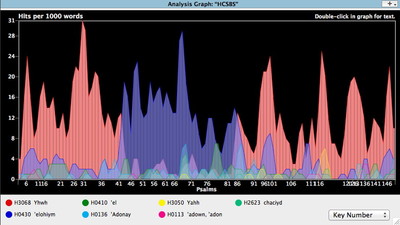My family has been reading through the Psalms together for the past couple months, and the other day we read Psalm 72. Before we began, my wife remarked that we were about to start Book 3 of the Psalms, and then she asked about the significance of these “books.”
Most print Bibles and Bible outlines distinguish five book divisions in the Psalter. Book 1 consists of Psalms 1–41, Book 2 of Psalms 42–72, Book 3 of Psalms 73–89, Book 4 of Psalms 90–106, and Book 5 of Psalms 107–150. Even if you’re not familiar with these book divisions, it is clear from reading through the Psalms that they have not merely been thrown together willy-nilly. We have often seen that for three or four days in a row, the psalms all happen to sound very similar or address similar topics. It’s clear they have some kind of arrangement—in much the same way that modern hymnals group various hymns.
Now, I’m hardly an expert on the arrangement of the Psalms, a fact driven home to me every time I open Fee and Stuart’s excellent How to Read the Bible Book by Book in parallel with the Psalms. This helpful reading guide addresses the arrangement of the psalms in a way that I can easily get my head around, but it also reminds me how little I have paid attention to that arrangement up to now. When my wife asked me about the significance of these book divisions, I didn’t have a clear way to explain the arrangement except to give a general explanation that the psalms have been arranged in various groupings. I then gave her one of the only examples I could think of: namely, that the different books tend to use different names for God. In other words, some books of the Psalter tend to use the name elohim, which is generally translated “God,” while other books prefer the name YHWH, which is typically translated as “LORD” or “Yahweh.”
To demonstrate this, I did a quick search of the HCSB with Strong’s numbers (the translation we read from) for God <OR> Lord. I restricted the search range to Psalms, then selected Analysis Graph from the Details pop-up menu (the one with the little bar graph icon). The resulting graph shows clearly that books 1, 4, and 5 prefer the name YHWH, while books 2 and 3 use the name elohim. Pretty cool, huh?
Fortunately, my wife didn’t go on to ask the reason for each book’s preference, or else I would have been stumped. But a quick search and analysis graph gave me a clear example of at least one distinction among these various books.
Now I’m just left to wonder if my family thinks I’m really that smart, or if they know it’s just that Accordance makes me look that way!


